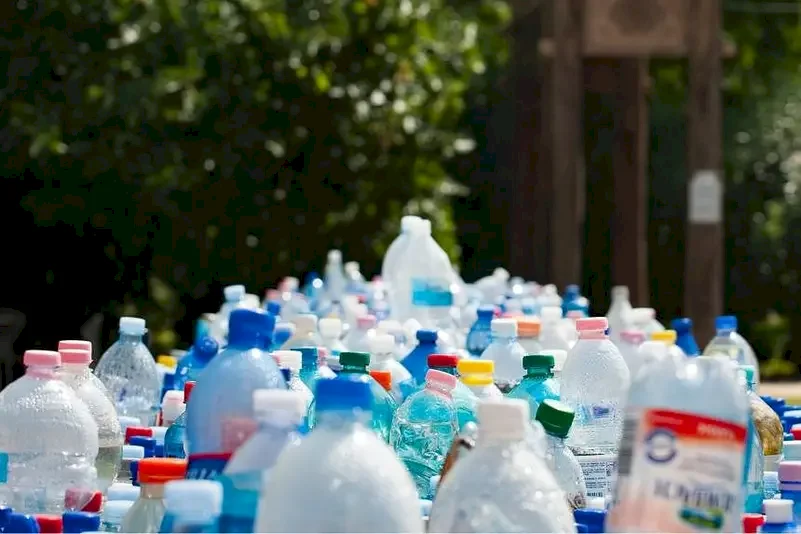
Study: These Global Hotspots for Plastic Pollution
SadaNews - Solid plastic waste and its micro-particles are polluting coastlines around the world, with new research revealing sharp regional differences in the types and concentrations of plastic globally.
A study conducted by the University of Portsmouth, published in the Environmental Monitoring and Assessment Journal, examined nearly 59,000 pieces of plastic to map global patterns of coastal pollution.
The study utilized data from the large-scale Microplastic Survey (BMS), which analyzed 1,089 surveys conducted by volunteers in 39 countries between 2018 and 2024.
The study revealed that pre-production plastic pellets were the most common type of plastic, with the Netherlands recording the highest numbers, at levels 14 times higher than the second most affected country, primarily due to a shipping container disaster.
Bioplastic pellets, widely used in wastewater treatment, were densely concentrated in the Netherlands and Honduras, while the UK ranked third based on the average numbers per sample.
In contrast, secondary plastics, which are fragments that decompose from larger materials, were more common in Kenya and Honduras, with expanded polystyrene (a lightweight solid plastic) being more prevalent in Thailand, Indonesia, and Portugal. In all countries, white plastic dominated, followed by clear or opaque plastic, then blue and green plastics.
In addition to pollution data, the study demonstrated how citizen science can be applied on a global scale. Over a thousand people registered to participate in the project from 66 countries, with the UK, the US, and Australia being the most involved.
In successful projects, they were often managed by non-governmental organizations, proving to be the most effective contributors, frequently responsible for the majority of the surveys in their areas.
A Global Crisis
Lead author Dr. David Jones from the University of Portsmouth stated, "Our results show that plastic pollution is not just a local problem, but a global crisis, with different regions facing varying challenges. Thousands of volunteers participated in the large Microplastic Survey, demonstrating the capacity of citizen science to collect data on a scale that traditional methods alone could not achieve."
The research highlights the increasing importance of citizen science in supporting international efforts to tackle plastic pollution. In 2022, the UN Environment Assembly agreed on a legally binding treaty to end plastic pollution, urging member states to improve monitoring and reporting, with the treaty still under negotiation.
Dr. Michelle Hill, head of the Faculty of Environment and Life Sciences at the University of Portsmouth, noted, "Despite the limited data collected by volunteers, citizen scientific research can bridge critical gaps, particularly in areas where environmental monitoring resources are scarce. It also contributes to building community engagement, a vital step in addressing plastic pollution at its source."
The study concluded that combining citizen-involved sciences with traditional scientific methods can provide the most effective approach to tracking the spread of microplastics and shaping policies to mitigate it.
Studies indicate that plastic pollution has sharply risen over the past decades, with the world producing about 450 million tons of plastic annually, half of which is used once, and with less than 10% recycled. Plastic waste is spreading from the peak of Mount Everest to the deepest trench in the Pacific Ocean, the Mariana Trench.
According to studies, plastic production has increased more than 200 times since 1950 and is set to nearly triple again, exceeding one billion tons annually by 2060.
While plastic has many important uses, the fastest growth has been in the production of single-use plastics, such as beverage bottles and fast-food containers.
More than 98% of plastics are made from fossil oil, gas, and coal, using over 16,000 chemicals in their production, with this energy-intensive production process exacerbating the climate crisis by releasing the equivalent of two billion tons of carbon dioxide annually, more than the emissions of Russia, the fourth largest polluter in the world.
Plastic production also causes air pollution, as more than half of unmanaged plastic waste is burned outdoors, according to the study, in addition to contaminating soil, forests, and oceans, increasing their warming, and undermining their role in carbon absorption.
Source: Al Jazeera + Agencies

Teenagers Prefer Talking to Chatbots Over Humans

The Size of a Sand Grain... A Robot That Can Enter Blood Vessels and Deliver Drugs Precise...

High Demand for Memory Chips May Raise Smartphone Prices... What's the Story?

"TikTok" Allows Users to Reduce AI-Generated Content

Study: Smoking One Cigarette a Day Harms the Heart at All Levels

First booster of the developed SpaceX rocket fails during test

Almonds or Pistachios: Which is Better for Heart Health and Blood Sugar?

